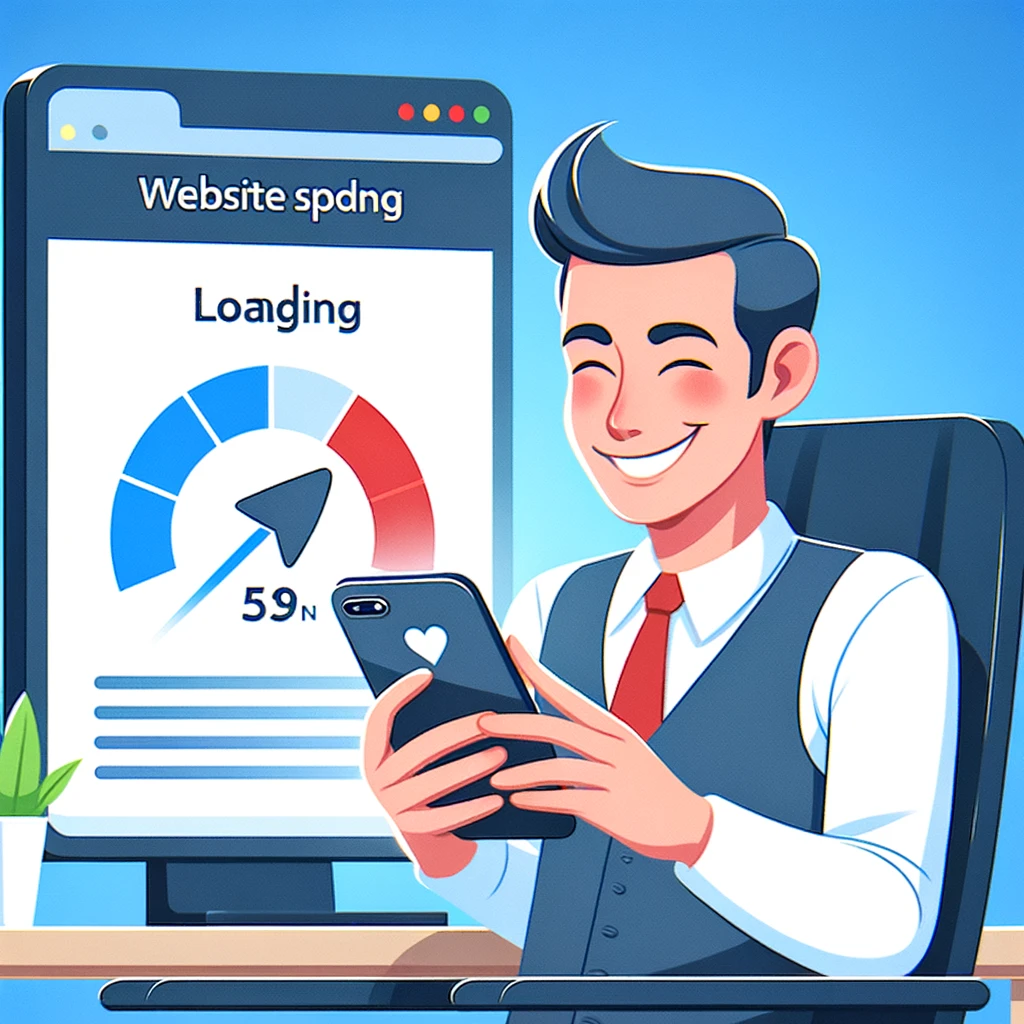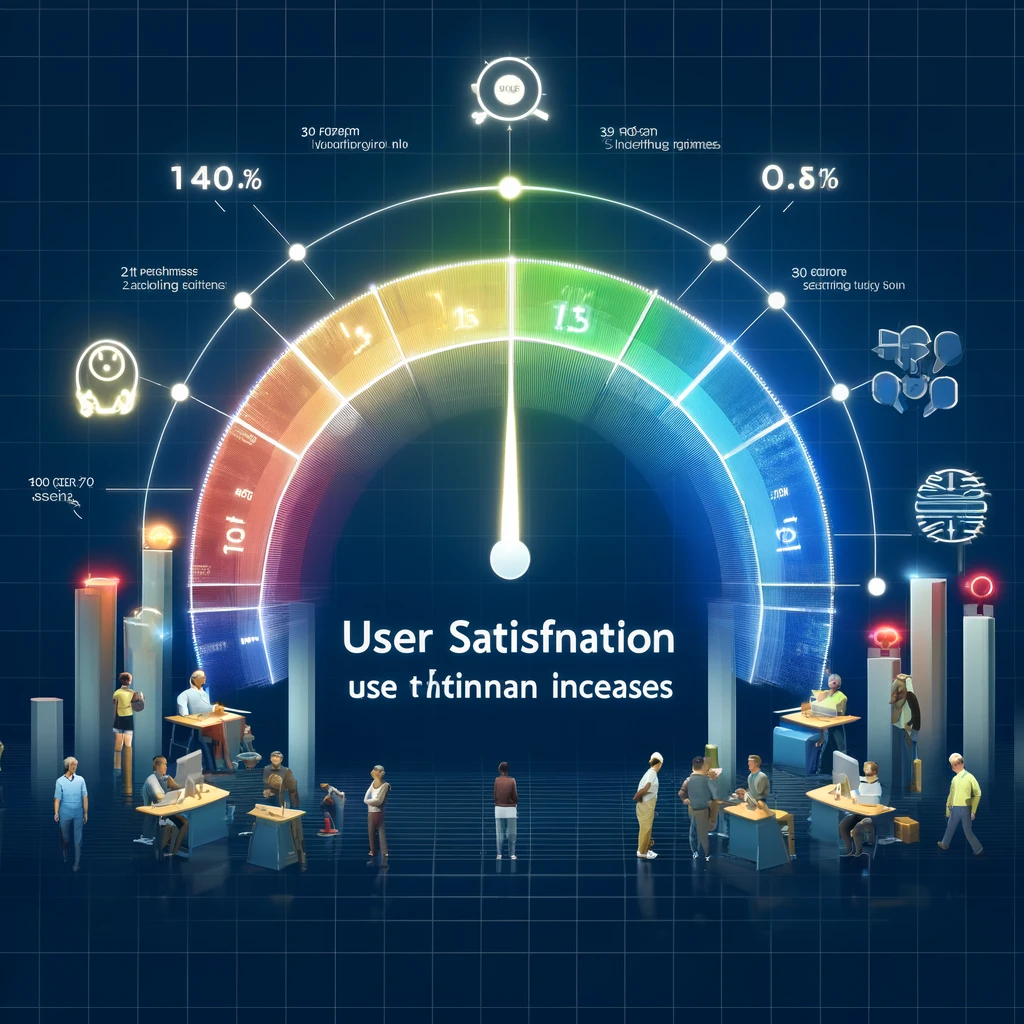Introduction

Hey there, Columbia business owners! Have you ever clicked on a website only to wait… and wait for it to load? Frustrating, isn’t it? Well, it turns out, your customers think so too. In the digital age, website speed isn’t just a nice-to-have; it’s crucial for keeping your visitors happy and engaged. If your site takes too long to load, you might lose potential customers before they even see what you have to offer.
Website speed directly impacts user experience, influencing everything from customer satisfaction to your site’s overall performance on search engines. For businesses in Columbia, where competition might be just a click away, ensuring your website loads quickly is essential for staying competitive.
In this post, we’re diving deep into the role of website speed in enhancing user experience. We’ll explore how improving your site’s speed can lead to better user engagement, increased customer retention, and even a boost in your SEO efforts. Ready to speed things up? Let’s zoom into the fast lane of web performance!
Understanding Website Speed

Hey, let’s get into the nitty-gritty of what website speed actually means for your Columbia business. Understanding this can help you not only improve your site’s performance but also enhance how visitors interact with your site.
What is Website Speed?
Simply put, website speed is how quickly your site loads when someone clicks on it from search results or types your URL into their browser. This involves several stages:
- Time to First Byte (TTFB): This is how long it takes from when a visitor makes an HTTP request to when they receive the first byte of data from the server. It’s like the first hello from your website.
- Page Load Time: This is the time it takes for the entire content on a page to load completely. Ideally, your visitors shouldn’t have to wait more than a couple of seconds.
Key Metrics to Measure Speed
To really know how your website stacks up, you should be familiar with a few key performance indicators:
- TTFB
- Start Render: When the first content appears on the screen.
- Fully Loaded Time: When all of the page’s resources have completely loaded.
Here’s a table that breaks down these metrics:
| Metric | Description | Ideal Time |
|---|---|---|
| Time to First Byte | Time from request to first byte received | Under 200 ms |
| Start Render | Time until something is seen on the page | Under 1 second |
| Fully Loaded Time | Total load time of all page content | Under 3 seconds |
Tools for Measuring Website Speed
- Google PageSpeed Insights: Provides insights into how well your site loads and offers specific recommendations for improvement.
- GTmetrix: Analyzes your website’s speed performance and provides both summary and detailed information.
- WebPageTest: Offers a detailed breakdown of load times, allowing for testing from different locations globally, which is useful if you serve international visitors.
Understanding and monitoring these aspects can help you pinpoint where your website may be lagging and how to make effective improvements.
Impact of Speed on User Experience

Hello again! Now that we’ve covered what website speed is and how to measure it, let’s dive into how it directly impacts the user experience for your Columbia-based audience. A fast-loading website isn’t just about beating the clock—it plays a critical role in how users perceive and interact with your site.
Why Speed Matters to Users
Speed is one of the first impressions users have of your website. It sets the tone for their entire experience:
- First Impressions: Most users form an opinion about your site within seconds. A slow website can make your business seem less credible or reliable.
- User Patience: In our fast-paced digital world, users expect quick results. If your site takes too long to load, users are likely to abandon it before they even see what you offer.
Statistical Impact on User Behavior
The correlation between site speed and user behavior is well-documented. Here’s how it typically breaks down:
- Bounce Rate: The probability of a user leaving your site increases dramatically as page load time goes up.
- Conversion Rates: Faster sites see higher conversion rates. Even a one-second delay can cause a significant drop in conversions.
Here’s a quick overview of these impacts:
| Speed Impact | User Behavior Effect | Business Outcome |
|---|---|---|
| Increased Load Time | Increased bounce rates, reduced time on site | Lower user engagement, lost sales |
| Decreased Load Time | Increased page views, longer sessions | Higher user satisfaction, increased conversions |
Creating a Positive Experience
Optimizing your website’s speed enhances user experience, leading to:
- Increased Engagement: Users are more likely to explore your site further, read your content, and interact with your services.
- Customer Retention: Fast, responsive sites build trust and encourage users to return.
By understanding the link between site speed and user experience, you can make informed decisions to improve your website and ensure it meets the expectations of your Columbia audience.
Website Speed and SEO

Hey there! Let’s connect the dots between website speed and SEO. It’s not just about keeping users happy; speed also significantly impacts how search engines rank your site. For businesses in Columbia, where local competition can be fierce, optimizing for search engines is crucial. Here’s how your website speed influences your SEO.
Google’s Speed Consideration
Google has explicitly mentioned speed as a ranking factor, especially with the shift towards mobile-first indexing. This means your mobile site’s speed can influence how you rank in search results.
- Mobile-First Indexing: Google predominantly uses the mobile version of content for indexing and ranking. A slow mobile site can hurt your rankings.
- User Experience Signals: Google uses metrics like dwell time (how long visitors stay on your site) as indicators of content quality. Faster sites tend to keep users engaged longer.
Impact on SEO Performance
A slow-loading website can directly affect several SEO-related performance indicators:
- Search Engine Crawling: Faster sites can be crawled more efficiently by search engines, allowing more content to be indexed quickly.
- Bounce Rate: High bounce rates, often caused by slow loading times, can signal to search engines that your site may not be delivering value, affecting your rankings.
Here’s a simple table to summarize the impact:
| Aspect | SEO Impact | Improvement Tips |
|---|---|---|
| Load Times | Direct ranking factor for Google | Optimize images, minimize JS and CSS |
| User Engagement | Influences dwell time and bounce rate | Improve loading times for better engagement |
| Crawling Efficiency | More content indexed | Streamline site structure and server response |
Strategic SEO Enhancements
To leverage speed for SEO, focus on:
- Optimizing Technical Elements: Compress images, utilize caching, and minimize the use of heavy scripts.
- Improving Server Response Times: Choose a reliable web hosting service that offers quick server responses.
Understanding and optimizing these aspects of your website can enhance both your user experience and your SEO, making your site more competitive in both the local Columbia market and beyond.
Practical Steps to Improve Website Speed

Hello again, Columbia business community! Now that we understand the importance of website speed for both user experience and SEO, let’s roll up our sleeves and dive into some practical steps you can take to speed up your site. Improving your website’s load time doesn’t have to be a daunting task. Here are straightforward strategies to make your site faster and more efficient.
Optimize Your Images
Large images are often the biggest culprits in slowing down websites.
- Compress Images: Use tools like Adobe Photoshop, TinyPNG, or online compressors to reduce image file sizes without losing quality.
- Choose the Right Format: JPEG for photos, PNG for graphics with fewer than 16 colors, and SVG for logos and icons.
Minimize HTTP Requests
Each file and script your site needs to load can significantly impact speed.
- Reduce Use of Scripts and Plugins: Evaluate if all scripts, like tracking tools or plugins, are necessary.
- Combine Files: Where possible, combine multiple CSS and JavaScript files into one.
Leverage Browser Caching
Browser caching stores website resources on local computers when people visit your site, making subsequent visits faster.
- Set Expiry Dates: Use
.htaccessto set expiry dates for different types of content. CSS and JavaScript files can have a longer cache time compared to dynamic content.
Improve Server Response Time
The amount of time your DNS lookup takes can affect your site speed.
- DNS Lookup: Choose a performance-optimized DNS provider.
- High-Quality Hosting: Invest in a reputable hosting solution that matches your traffic needs and geographic location.
Here’s a quick guide to these optimization steps:
| Optimization Area | Tools/Tips | Impact on Speed |
|---|---|---|
| Image Optimization | Compression tools, appropriate formats | Reduces file size, faster loading |
| HTTP Requests | Minimize scripts, combine files | Fewer components to load, quicker performance |
| Browser Caching | .htaccess for setting expiry dates | Speeds up return visits |
| Server Response | Performance-optimized DNS, quality hosting | Reduces initial server response time |
By implementing these practical steps, you can significantly enhance your website’s performance, making it a faster, more pleasant place for your customers to visit.
Monitoring and Maintaining Speed

Hey there, savvy Columbia business owners! Achieving a fast website isn’t just a one-time task—it’s an ongoing commitment. Regular monitoring and maintenance are key to ensuring that your site continues to perform at its best. Here’s how you can keep tabs on your website speed and make necessary adjustments over time.
Continuous Monitoring of Website Speed
Stay proactive by regularly checking the speed of your website. This helps you catch and rectify any slowdowns before they impact user experience or SEO.
- Google PageSpeed Insights: Keep using this tool to get an updated analysis of your site’s performance on both mobile and desktop.
- GTmetrix: Schedule regular checks to monitor load times and get insights into what might be slowing your site down.
Regular Updates and Maintenance
Technology and web standards are always evolving, and so should your website.
- Update Content Management System (CMS): Whether you use WordPress, Joomla, or any other CMS, keeping it updated ensures you have the latest performance optimizations and security patches.
- Optimize Database: Over time, databases can become bloated. Regularly cleaning up your database helps improve response times.
Here’s a simple table to guide your maintenance strategy:
| Maintenance Task | Frequency | Tools/Tips |
|---|---|---|
| Speed Tests | Monthly | Google PageSpeed Insights, GTmetrix |
| CMS Updates | As released | Update notifications from your CMS |
| Database Optimization | Quarterly | Plugins/tools specific to your CMS |
Troubleshooting and Resolving Speed Issues
Sometimes, despite your best efforts, you might encounter unexpected slowdowns.
- Identify Resource Hogs: Use tools to pinpoint scripts, plugins, or widgets that are slowing your site.
- Review Hosting Plan: Ensure your hosting plan is adequate for your traffic levels and site complexity. Upgrade if necessary.
By establishing a routine for monitoring and maintaining your website, you can ensure that it remains fast, secure, and effective at engaging users and supporting your business goals.
Conclusion

Well, we’ve come a long way, Columbia business friends! From understanding the crucial role of website speed to learning about practical steps for improvement and the importance of ongoing maintenance, we’ve covered what it takes to keep your site quick on its feet. Let’s wrap up with some final thoughts on why keeping your website fast is more than just a technical necessity—it’s a business strategy.
Why Speed Can’t Be Overlooked
In the digital marketplace, website speed is often the first impression you make. A fast-loading site reflects well on your business, suggesting reliability and professionalism. Here’s why ongoing attention to speed is crucial:
- User Experience: A swift website keeps users happy and engaged, reducing bounce rates and increasing the likelihood of conversions.
- SEO Advantage: Speed is a key factor in SEO. A faster site helps you rank better, drawing more traffic.
- Competitive Edge: In a bustling market like Columbia, a fast website can be the difference between standing out and getting lost in the crowd.
Keeping the Momentum
Your website is a living part of your business and needs regular care to perform its best. Here’s a quick checklist to keep your site in top speed:
| Task | Frequency | Purpose |
|---|---|---|
| Performance Reviews | Monthly | Ensure no new changes have slowed the site |
| Update Plugins/Themes | As updates are released | Keep software current to avoid security and speed issues |
| Monitor User Feedback | Continuously | Adapt the site based on user experience insights |
Remember, the goal is not just to speed up your site but to maintain that performance over time, adapting to new challenges and opportunities as they arise.